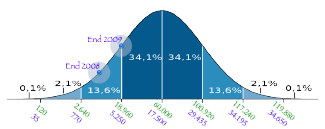The announcement says that “Cinedigm … announced a… partnership with SENSIO® to bring the first ever globally broadcasted LIVE 3D sporting event to theatres outside the United States.” Since “globally” includes “theaters outside the US” we suspect some nuance not immediately obvious. Since Cinedigm isn’t known for having launched in other countries besides the US, it may mean something different than what it implies. [E-mails are out to the parties involved, so we will update this news item as details filter in.] Update: Aqiva, once expecting more, is now responsible for showing the 3D version in the UK only.
CineLive™ Technology is mentioned in the release. Cinedigm has used IDC equipment in some of their installations, and there is a d-cinema IDC product which has Sensio chips in it. The cut sheets for these items are lacking technical specs.
There is mention of 100’s of theaters in the press release. This is a bit of a let down from the numbers that were originally expected. In the EU alone there are over 3,500 cinemas with 3D equipment…and the EU would be expected to be the largest market for an event like this. Edit: News is all over now that 3D broadcasts will be in many countries…for TV [see here for France, Swiss, Spain, Netherlands.]
There are a few cinema press releases;
in England: A site with links to various 3D site, including non-cinema
in South Korea…there will be 3 games that include S. Korea shown, plus any games leading to the finals that include the countries team. This article points out that Korean cinemas had a good experience with the Cup games in 2D two years ago: Watch World Cup in 3D theaters
in Italy…
The company said Wednesday it would screen about a dozen key matches starting in the final days of the second round, including all of the games from that point and onward featuring Italy, the defending champions. The first game to be aired will be the June 24 match between the Italian side and Slovakia.
Among the non-Italian games to be aired is the Brazil-Portugal match, as well as the final and semi-final games, even if they do not include the Italian squad.
There are no new press releases from Germany continuing the story from last week that the two largest German theater syndicates have refused to sign onto the 3D broadcast event because of quality issues. It will be a feat for Cinedigm to figure out the problems of different frame rates and broadcasting standards while working from the US. One hopes a good team has flown over.
in China…
s the first 3D World Cup, 25 of the tournament’s 64 matches will be broadcast live in 3D. However, cinemas in China have not shown much enthusiasm. Only 40 throughout the country applied for the right to broadcast live matches, just two of them in Shanghai.
To screen live football matches in 3D, a cinema has to install a direct broadcast satellite receiver system, which costs about 200,000 yuan (US$29,290). Then there is a 50,000 yuan broadcast fee.
As some of the matches will be on at 2am, there would be extra operational costs. As a result, a ticket for a 3D World Cup match could be as much as 200 yuan (US$29).
There’s also the problem that the peace and quiet of a cinema might not be viewed by enthusiastic fans as the best place to view a sport which inspires so much passion.
Presenting mid-quality 3D in a theater after the abusive reviews of Clash of the Titans (and to a large extent Alice in Wonderland) is not necessarily a bright idea at this stage of digital cinemas evolution. Only in the last few months, mostly in advance of Avatar, has there been a minor explosion in d-cinema installations. Although this has led to a doubling of digital screens, it is still less than 20% of theaters world-wide. With 3D TV getting a lot of press and marketing investment from the television manufacturers, the differentiation will be blurred in patron’s minds after seeing a 720p image in a theater compared to sitting a few meters away from a TV screen with a well-scaled HD image.




